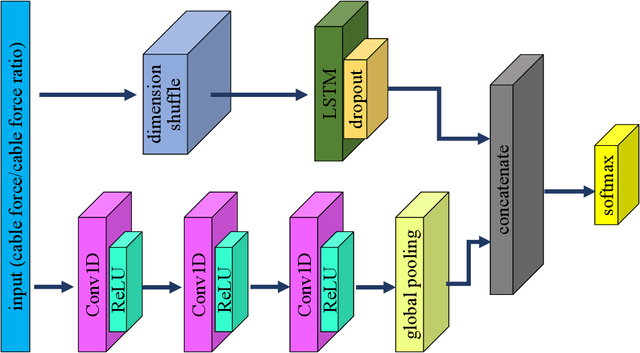Jin Yan
High-Quality Pseudo-Label Generation Based on Visual Prompt Assisted Cloud Model Update
Apr 01, 2025Abstract:Generating high-quality pseudo-labels on the cloud is crucial for cloud-edge object detection, especially in dynamic traffic monitoring where data distributions evolve. Existing methods often assume reliable cloud models, neglecting potential errors or struggling with complex distribution shifts. This paper proposes Cloud-Adaptive High-Quality Pseudo-label generation (CA-HQP), addressing these limitations by incorporating a learnable Visual Prompt Generator (VPG) and dual feature alignment into cloud model updates. The VPG enables parameter-efficient adaptation by injecting visual prompts, enhancing flexibility without extensive fine-tuning. CA-HQP mitigates domain discrepancies via two feature alignment techniques: global Domain Query Feature Alignment (DQFA) capturing scene-level shifts, and fine-grained Temporal Instance-Aware Feature Embedding Alignment (TIAFA) addressing instance variations. Experiments on the Bellevue traffic dataset demonstrate that CA-HQP significantly improves pseudo-label quality compared to existing methods, leading to notable performance gains for the edge model and showcasing CA-HQP's adaptation effectiveness. Ablation studies validate each component (DQFA, TIAFA, VPG) and the synergistic effect of combined alignment strategies, highlighting the importance of adaptive cloud updates and domain adaptation for robust object detection in evolving scenarios. CA-HQP provides a promising solution for enhancing cloud-edge object detection systems in real-world applications.
A Stock Price Prediction Approach Based on Time Series Decomposition and Multi-Scale CNN using OHLCT Images
Oct 29, 2024



Abstract:Recently, deep learning in stock prediction has become an important branch. Image-based methods show potential by capturing complex visual patterns and spatial correlations, offering advantages in interpretability over time series models. However, image-based approaches are more prone to overfitting, hindering robust predictive performance. To improve accuracy, this paper proposes a novel method, named Sequence-based Multi-scale Fusion Regression Convolutional Neural Network (SMSFR-CNN), for predicting stock price movements in the China A-share market. By utilizing CNN to learn sequential features and combining them with image features, we improve the accuracy of stock trend prediction on the A-share market stock dataset. This approach reduces the search space for image features, stabilizes, and accelerates the training process. Extensive comparative experiments on 4,454 A-share stocks show that the model achieves a 61.15% positive predictive value and a 63.37% negative predictive value for the next 5 days, resulting in a total profit of 165.09%.
A Clustering Method with Graph Maximum Decoding Information
Mar 18, 2024Abstract:The clustering method based on graph models has garnered increased attention for its widespread applicability across various knowledge domains. Its adaptability to integrate seamlessly with other relevant applications endows the graph model-based clustering analysis with the ability to robustly extract "natural associations" or "graph structures" within datasets, facilitating the modelling of relationships between data points. Despite its efficacy, the current clustering method utilizing the graph-based model overlooks the uncertainty associated with random walk access between nodes and the embedded structural information in the data. To address this gap, we present a novel Clustering method for Maximizing Decoding Information within graph-based models, named CMDI. CMDI innovatively incorporates two-dimensional structural information theory into the clustering process, consisting of two phases: graph structure extraction and graph vertex partitioning. Within CMDI, graph partitioning is reformulated as an abstract clustering problem, leveraging maximum decoding information to minimize uncertainty associated with random visits to vertices. Empirical evaluations on three real-world datasets demonstrate that CMDI outperforms classical baseline methods, exhibiting a superior decoding information ratio (DI-R). Furthermore, CMDI showcases heightened efficiency, particularly when considering prior knowledge (PK). These findings underscore the effectiveness of CMDI in enhancing decoding information quality and computational efficiency, positioning it as a valuable tool in graph-based clustering analyses.
Condition Assessment of Stay Cables through Enhanced Time Series Classification Using a Deep Learning Approach
Jan 11, 2021



Abstract:This study proposes a data-driven method that detects cable damage from measured cable forces by recognizing biased patterns from the intact conditions. The proposed method solves the pattern recognition problem for cable damage detection through time series classification (TSC) in deep learning, considering that the cable's behavior can be implicitly represented by the measured cable force series. A deep learning model, long short term memory fully convolutional network (LSTM-FCN), is leveraged by assigning appropriate inputs and representative class labels for the TSC problem, First, a TSC classifier is trained and validated using the data collected under intact conditions of stay cables, setting the segmented data series as input and the cable (or cable pair) ID as class labels. Subsequently, the classifier is tested using the data collected under possible damaged conditions. Finally, the cable or cable pair corresponding to the least classification accuracy is recommended as the most probable damaged cable or cable pair. The proposed method was tested on an in-service cable-stayed bridge with damaged stay cables. Two scenarios in the proposed TSC scheme were investigated: 1) raw time series of cable forces were fed into the classifiers; and 2) cable force ratios were inputted in the classifiers considering the possible variation of force distribution between cable pairs due to cable damage. Combining the results of TSC testing in these two scenarios, the cable with rupture was correctly identified. This study proposes a data-driven methodology for cable damage detection that requires the least data preprocessing and feature engineering, which enables fast and convenient early detection in real applications.
Visual Natural Language Query Auto-Completion for Estimating Instance Probabilities
Oct 10, 2019



Abstract:We present a new task of query auto-completion for estimating instance probabilities. We complete a user query prefix conditioned upon an image. Given the complete query, we fine tune a BERT embedding for estimating probabilities of a broad set of instances. The resulting instance probabilities are used for selection while being agnostic to the segmentation or attention mechanism. Our results demonstrate that auto-completion using both language and vision performs better than using only language, and that fine tuning a BERT embedding allows to efficiently rank instances in the image. In the spirit of reproducible research we make our data, models, and code available.
 Add to Chrome
Add to Chrome Add to Firefox
Add to Firefox Add to Edge
Add to Edge